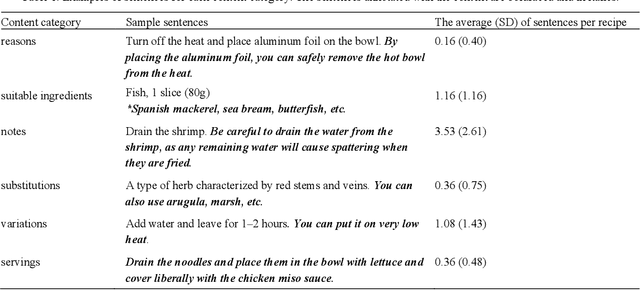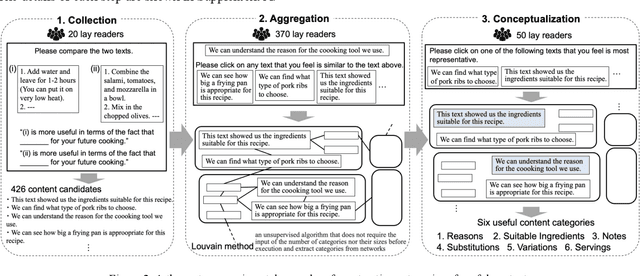Rina Kagawa
An experimental framework for designing document structure for users' decision making -- An empirical study of recipes
May 02, 2023



Abstract:Textual documents need to be of good quality to ensure effective asynchronous communication in remote areas, especially during the COVID-19 pandemic. However, defining a preferred document structure (content and arrangement) for improving lay readers' decision-making is challenging. First, the types of useful content for various readers cannot be determined simply by gathering expert knowledge. Second, methodologies to evaluate the document's usefulness from the user's perspective have not been established. This study proposed the experimental framework to identify useful contents of documents by aggregating lay readers' insights. This study used 200 online recipes as research subjects and recruited 1,340 amateur cooks as lay readers. The proposed framework identified six useful contents of recipes. Multi-level modeling then showed that among the six identified contents, suitable ingredients or notes arranged with a subheading at the end of each cooking step significantly increased recipes' usefulness. Our framework contributes to the communication design via documents.
 Add to Chrome
Add to Chrome Add to Firefox
Add to Firefox Add to Edge
Add to Edge